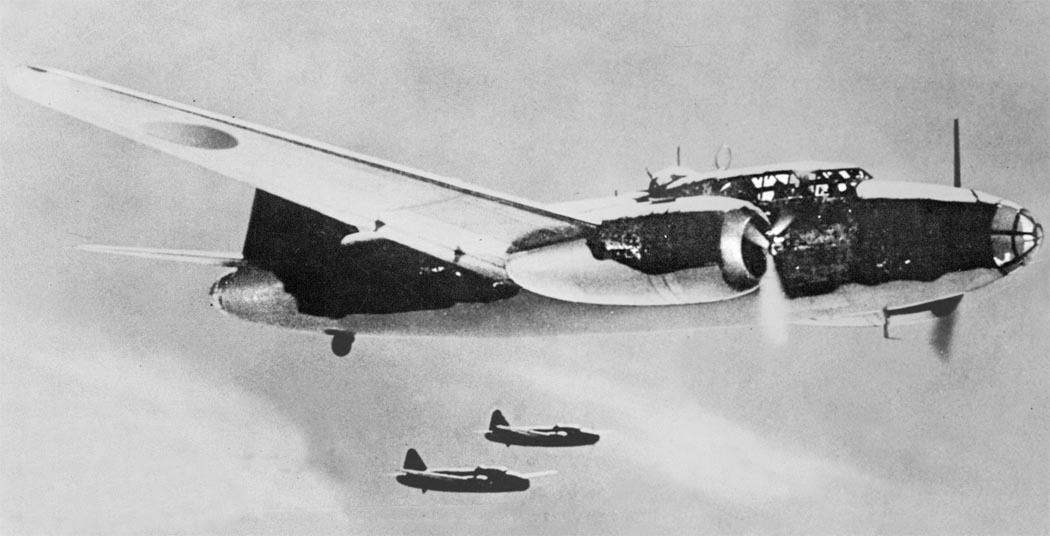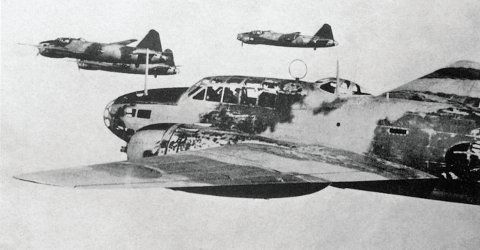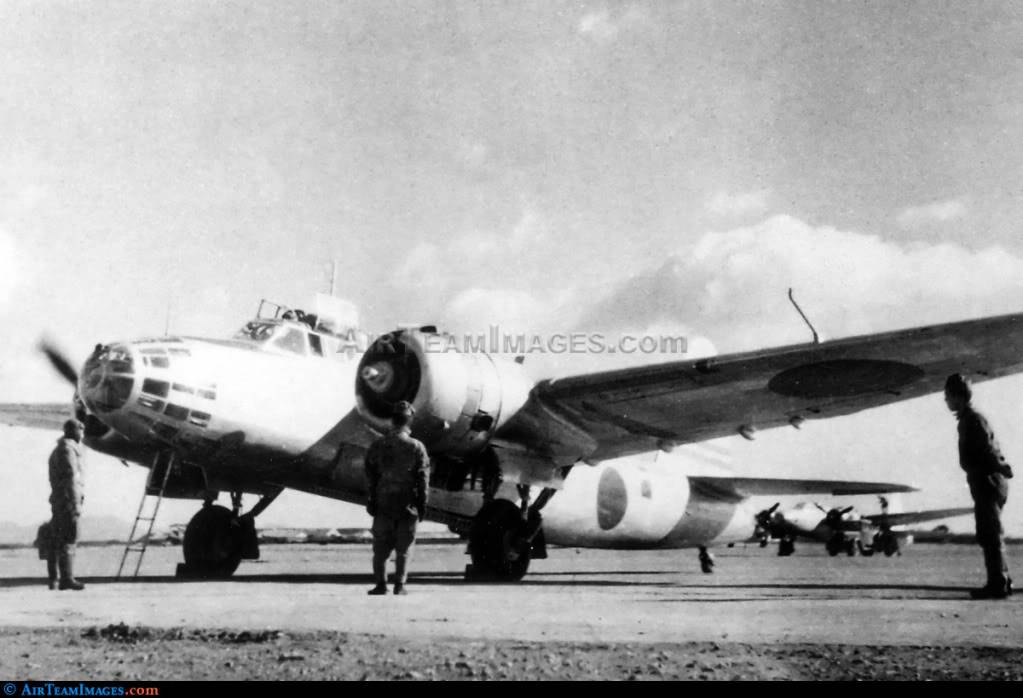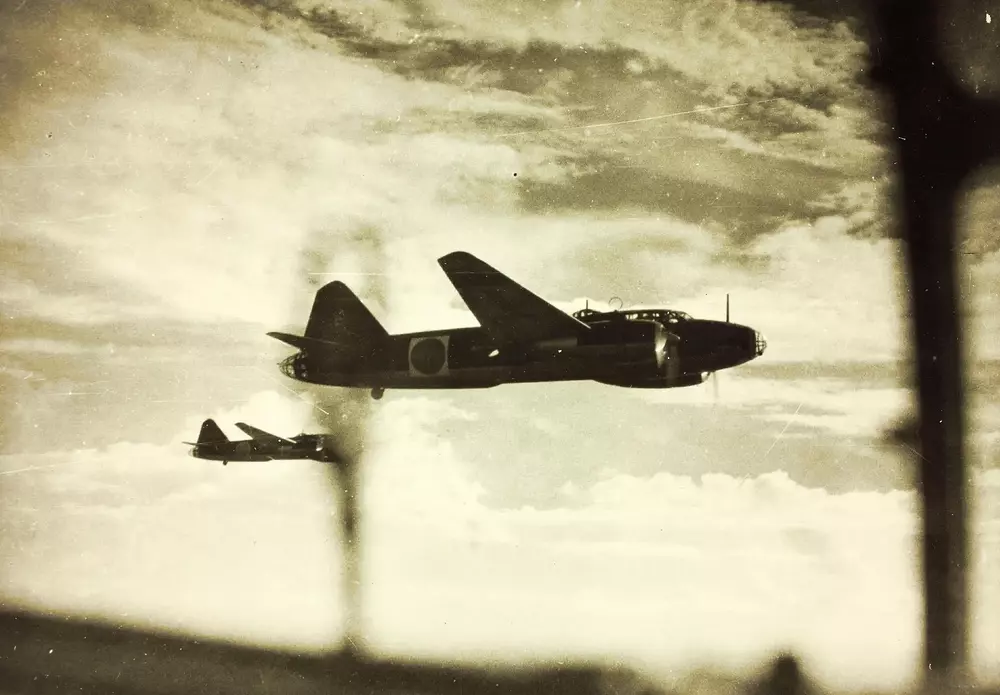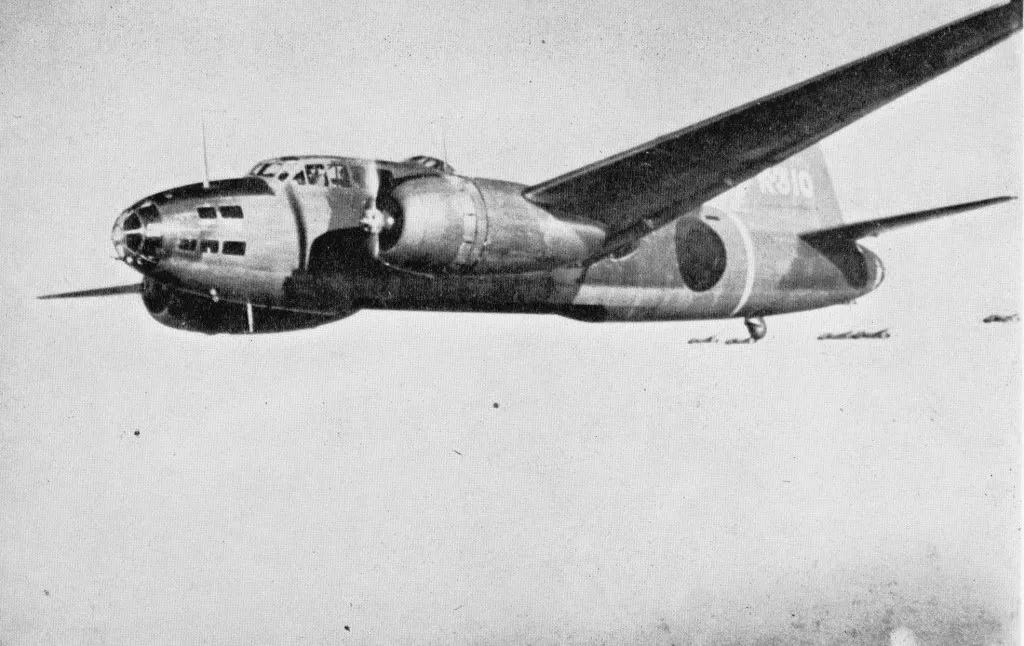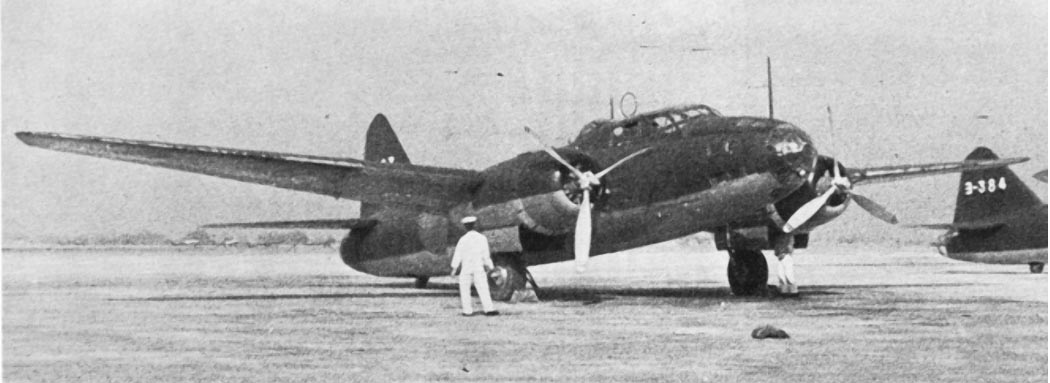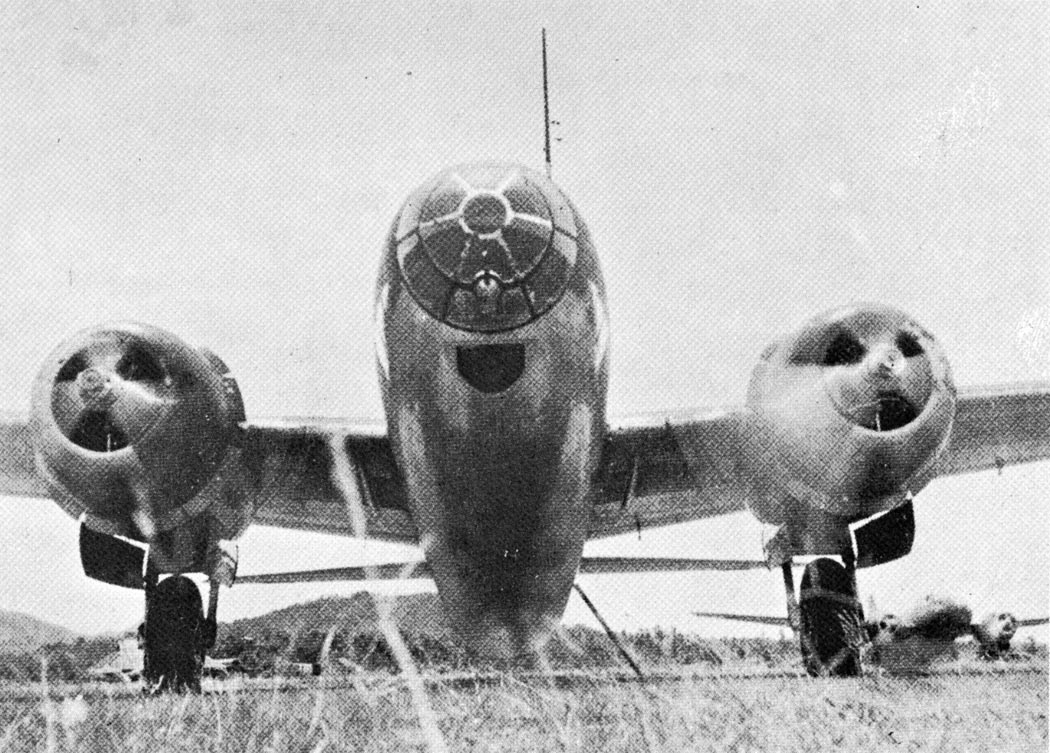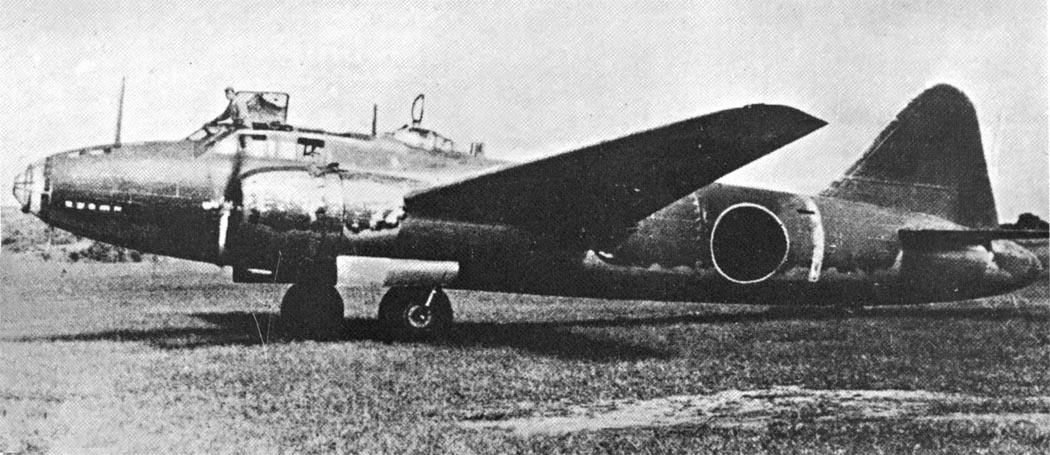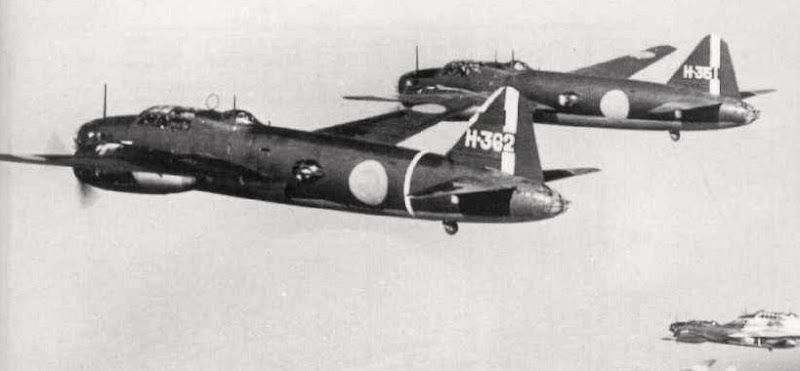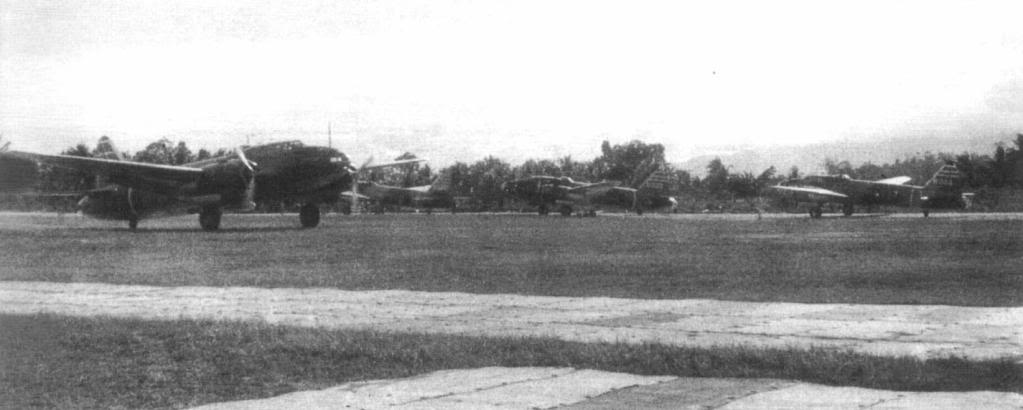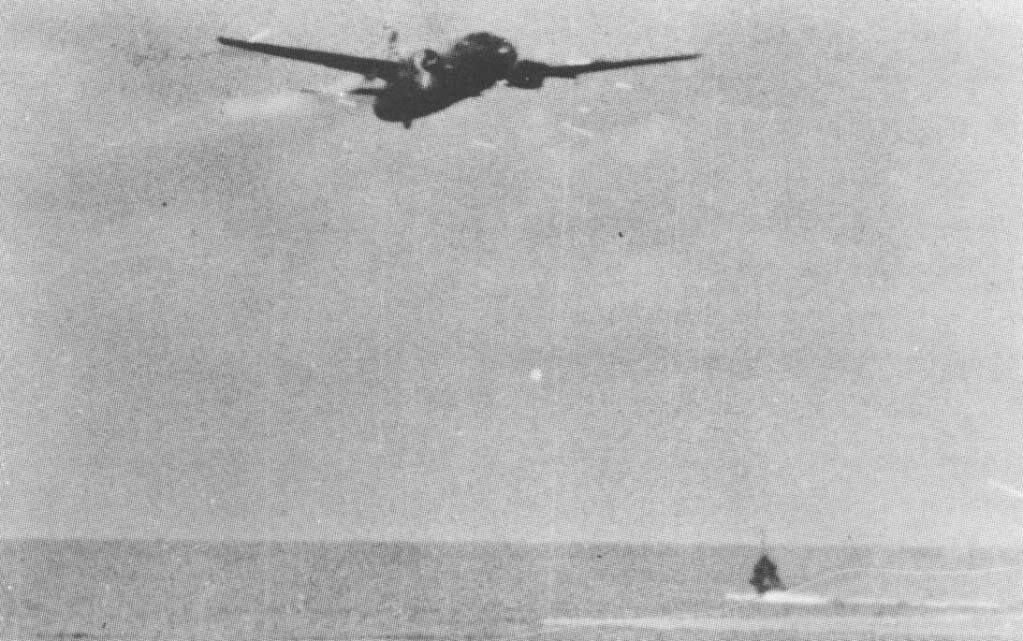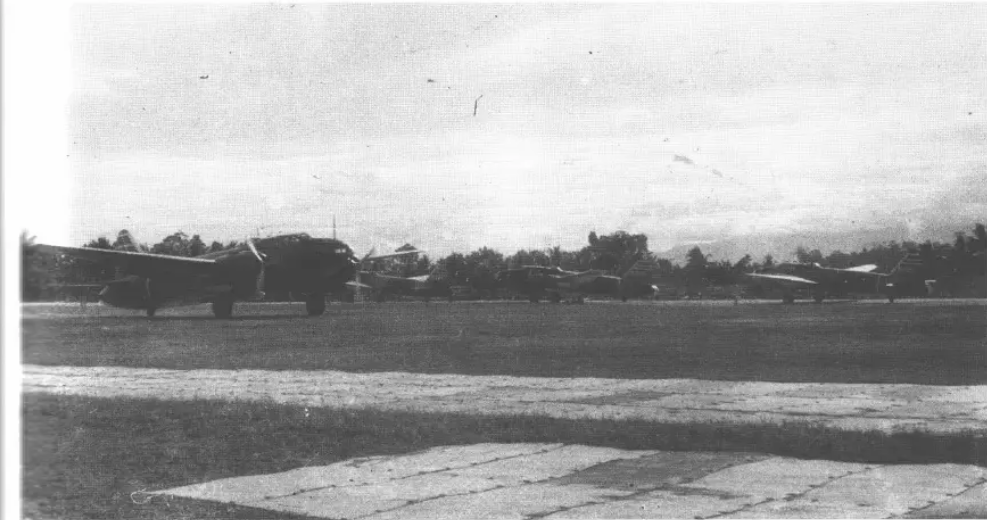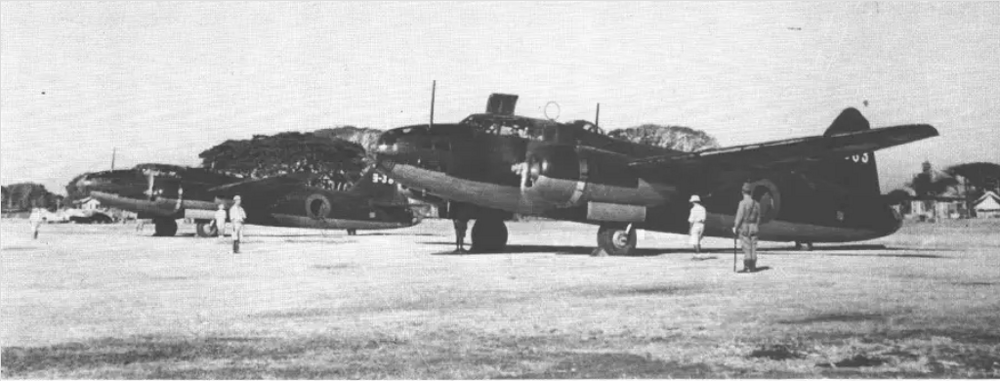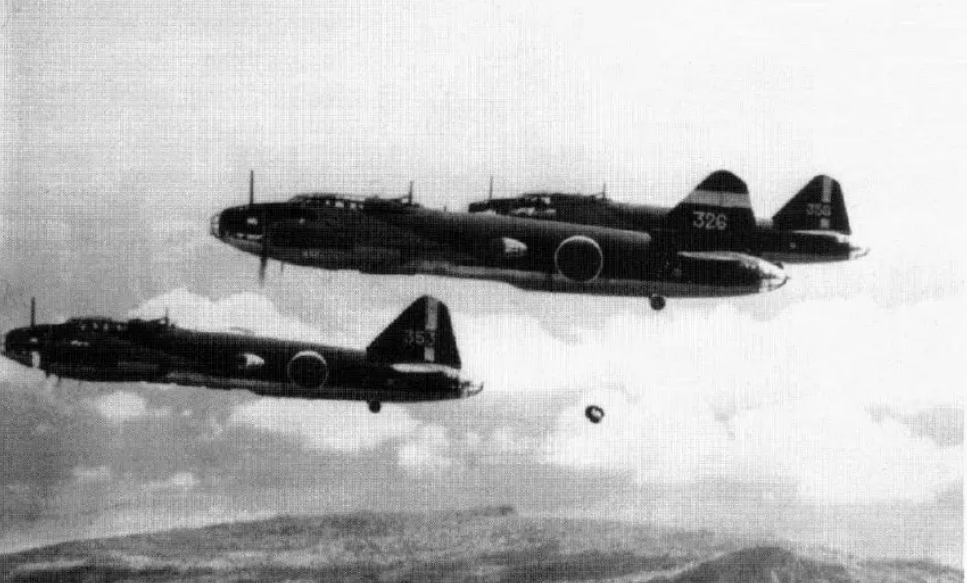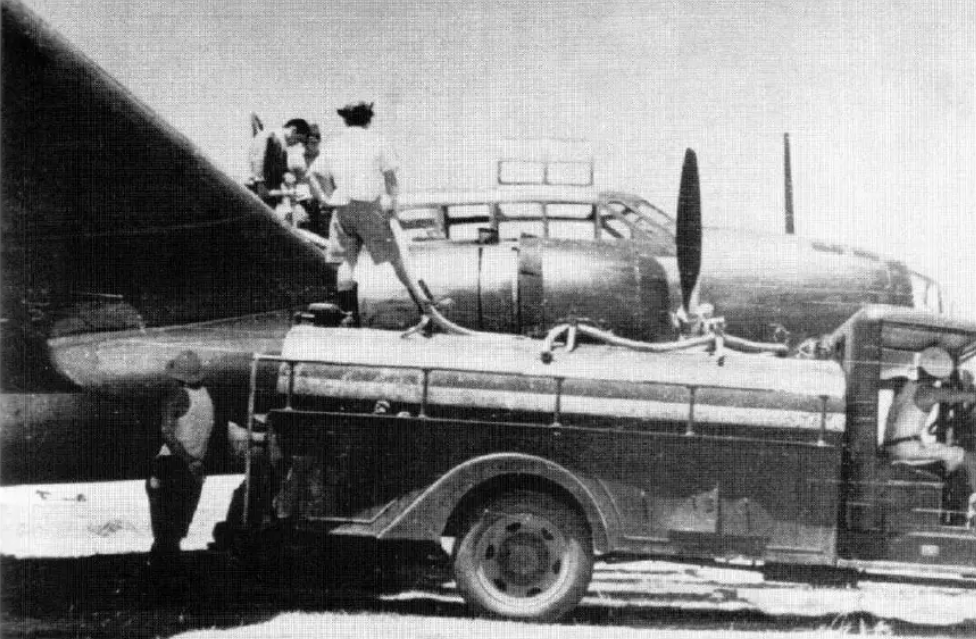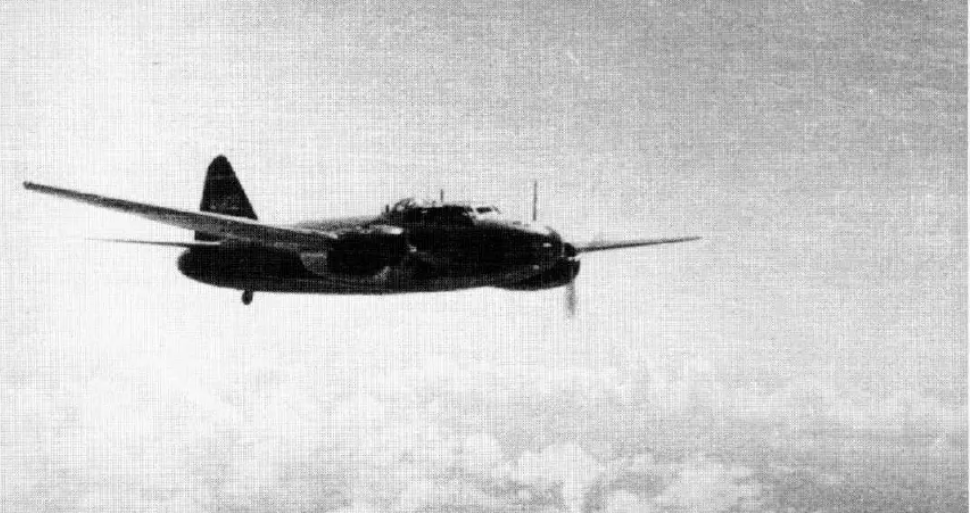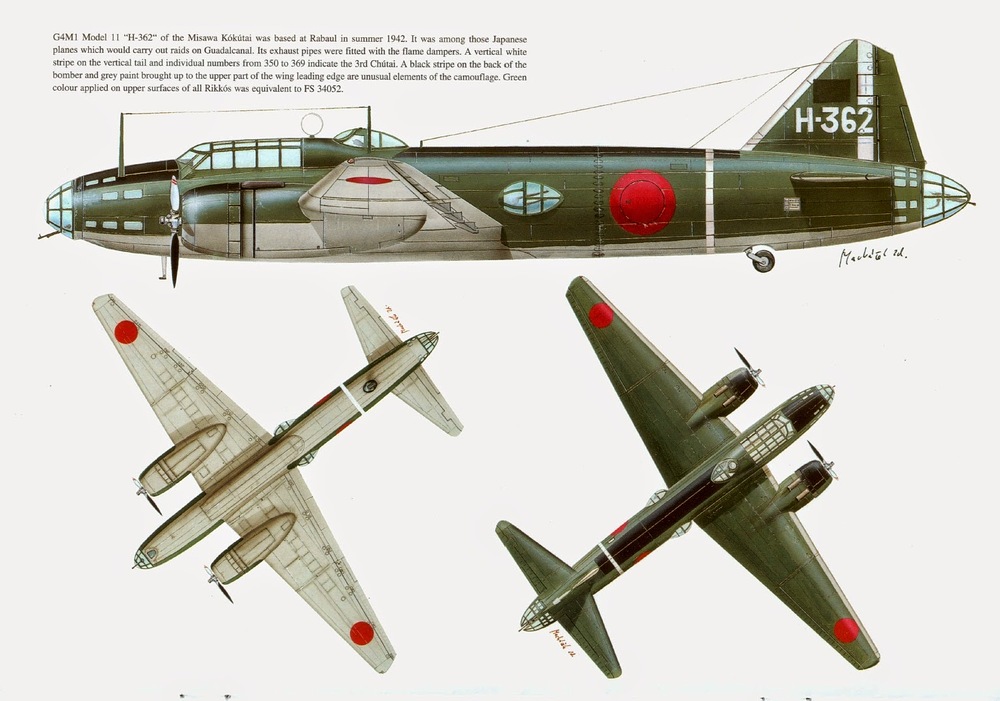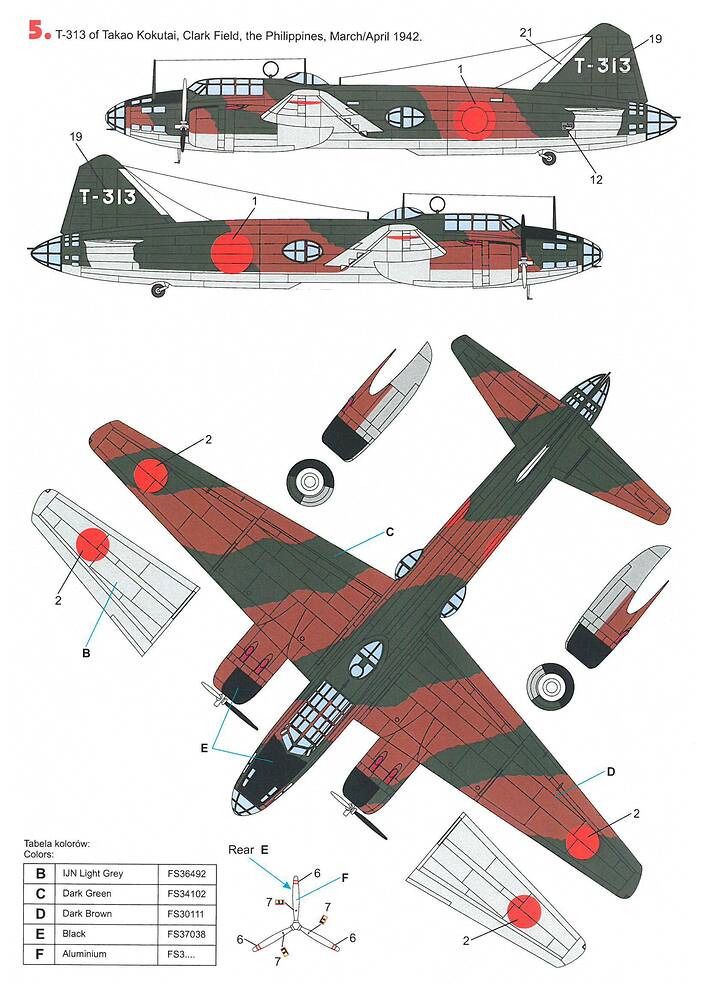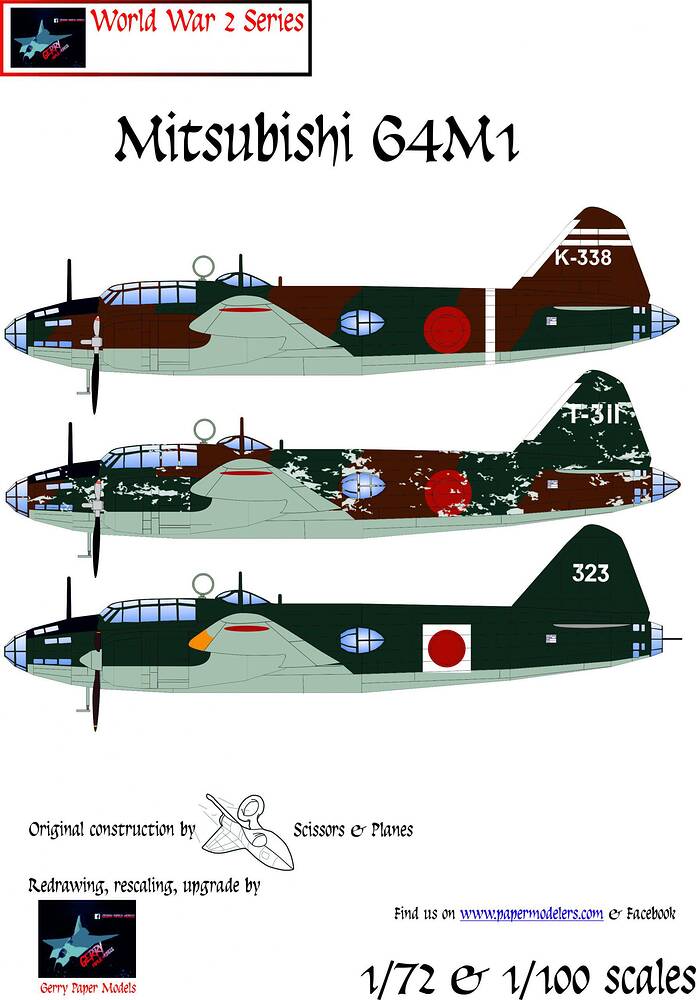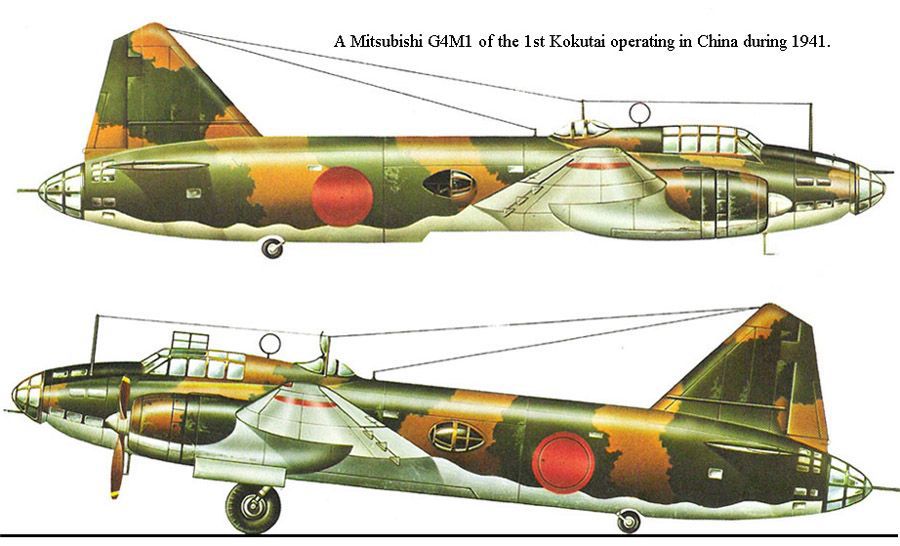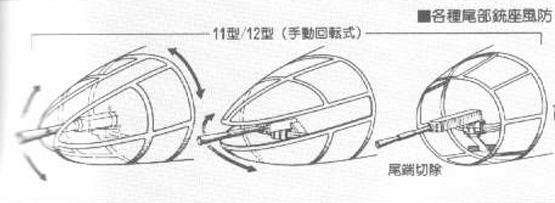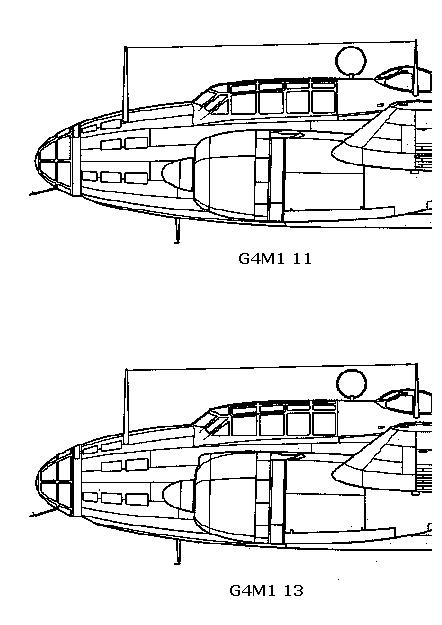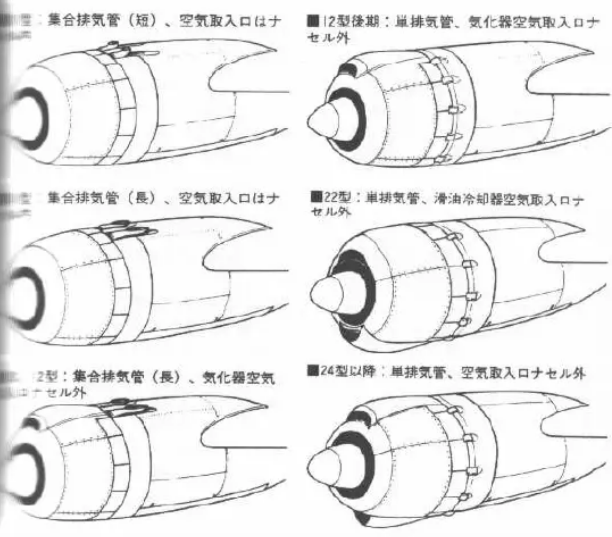- Yes
- No

Mitsubishi G4M1 Model 11 mod. 1941 (三菱 地上攻撃機 一一型)
The Mitsubishi G4M1 Model 11 mod. 1941 is the earliest version of the Mitsubishi G4M1 bomber that participated in combat. This aircraft entered service in April 1941 and was produced from December 1940 to August 1942, when an improved version was introduced. Between 406 and 661 G4M1 Model 11 mod 1941 aircraft were built. Aircraft of this version participated in the sinking of HMS Prince of Wales and HMS Repulse, as well as all key battles at the beginning of the war in the Pacific. The Allies nicknamed them ‘Betty’.
History
In September 1937, the Japanese Navy, looking for a successor to the G3M aircraft, issued the 12-Shi specification. The entire project of the new bomber received the highest level of secrecy and went to a trusted navy manufacturer, namely Mitsubishi. The requirements of the 12-Shi project were as follows:
- A range of at least 4818 km during reconnaissance flight and no less than 3067 km when fully armed.
- The plane was supposed to be armed with 1 torpedo weighing 800 kg or bombs of the same weight.
- A speed of at least 398 km/h was required at 3000 m
Design work on the future G4M began in the fall of 1937 under the leadership of engineer Joji Hattori, who was substituting for engineer Sueo Honjo, who was in the USA at that time. Joji initially wanted to create a new bomber based on the Mitsubishi G3M. In December 1937, tests of a small model of the future G4M began when the Naval Command decided to change the requirements for the new aircraft after receiving reports from the battles in China. They required the plane to be armed with a 20 mm cannon in the tail for self-defense. This made it impossible to create the future G4M based on the G3M bomber. This caused a halt in work until April 1938. At that time, Sueo Honjo returned to Japan and formed a new design team that included engineers Setsuji Fugunaga, Tetsuo Hikita, Denichiro Inoue, and Hiroshi Oda. The plane required a huge amount of fuel, which caused significant problems with the center of gravity; therefore, a double spar wing design was decided upon. Integrated fuel tanks were positioned between the spars. The wing had a thickness of 12.5 percent at the root relative to the aircraft fuselage and tapered to about 10 percent at the tip (a similar wing profile was used in the concurrently designed Mitsubishi A6M). The future G4M was planned to have flaps and landing gear that would be electrically retracted and extended due to problems with hydraulic drives. The rudder and elevator were very modern for the time. The rudder’s chord was precisely one-fourth the length at the respective heights of the elevator or rudder, which allowed for easy and comfortable control of such a large bomber (similar methods were used in jet aircraft after World War II). The fuselage of the future G4M was designed and built by the Yokosuka shipyards, which focused maximally on low aerodynamic resistance. However, the resulting fuselage turned out to be very large (German engineers visiting the Yokosuka plant initially thought it was a fuselage for a four-engine bomber). The fuselage of the future G4M was so large because it had to accommodate the Type 91 torpedo, which at that time was the heaviest and largest aerial torpedo in the world. Additionally, the large fuselage was intended to provide more comfort for the 7-member crew of the aircraft. The aircraft was to be powered by Mitsubishi MK4A Kasei 11 engines with a takeoff power of 1,125 kW (1,530 HP), which were to spin three-blade metal propellers with a diameter of 3,400 mm. The aircraft was to be armed with 4 Type 92 7.7mm machine guns (in the nose, on the back, and on the sides of the fuselage) and a 20mm cannon (in the tail). The mock-up of the new bomber was ready by August 1938, when it underwent its first inspection by naval command officers on August 16-17. On August 22-23, the mock-up underwent another inspection and permission was granted to begin preparing materials for two G4M prototypes. The first G4M prototype was completed in September 1939, and ground testing of the bomber began on September 20. On September 26-27, the final assessment of the aircraft was made and green light was given for flight tests. The first flight took place on October 23, 1939, when at 16:15 the prototype G4M, piloted by Katsuzo Shima, took off from Kagamigahara airport. Subsequently, until January 1940, the aircraft was tested at Mitsubishi facilities to detect and eliminate all issues. On January 24, 1940, the first G4M prototype was sent to the Japanese navy for further testing, and in March the second G4M prototype was delivered for testing. The prototype G4M aircraft exceeded the navy’s requirements, achieving a range of 5560 km (the requirement was 4818 km) and a maximum speed of 445 km/h at an altitude of 3000 m (the required speed was 398 km/h). However, due to delays caused by the requirements of the Navy Command for the development of an escort version G6M1, production of the first 13 pre-production G4M1 aircraft only began in December 1940. These 13 aircraft were sent for testing to the Japanese Navy Command, and it was not until April 2, 1941, that the Mitsubishi G4M1 was accepted into service as the Mitsubishi Navy Type 1 Attack Bomber Model 11 (三菱 地上攻撃機 一一型) or Mitsubishi G4M1 Model 11. The first production G4M1 Model 11s were also completed in April 1941, and from May 1941 they began to be delivered to the bombing and torpedo units of the Japanese Navy. The first place where the G4M1 arrived was China, where it quickly became evident that they were better than the Mitsubishi G3M bombers. In China, the G4M1 proved its usefulness thanks to its huge range, good defensive armament, and high speed. From December 1941, G4M1 bombers participated in attacks on the Philippines, Malaya, and the Dutch East Indies. On December 10, 1941, G4M1s along with G3M2/3 participated in the sinking of HMS Prince of Wales and HMS Repulse. The G4M1 aircraft took part in combat operations until the end of the war in the Pacific. In March 1942, a prototype G4M1 equipped with a Mitsubishi MK4E Kasei 15 engine was created, which had better performance at high altitudes. This version received the unofficial name G4M1 Model 13 and was introduced into production in August 1942. For a while, the G4M1 Model 11 mod. 1941 (version with Mitsubishi MK4A Kasei 11 engine) and G4M1 Model 11 mod. 1942 (version with Mitsubishi MK4E Kasei 15 engine) were produced in parallel. Between 406 and 661 G4M1 Model 11 mod. 1941 aircraft were produced.
Technical description
The Mitsubishi G4M1 Model 11 mod. 1941 is similar to the G4M1 aircraft from the game, but there are important differences between them that I will try to describe here.
- Instead of the Mitsubishi MK4E Kasei 15 engine, the Mitsubishi MK4A Kasei 11 engine is installed.
- The airplane has different engine covers.
- The Type 99 tail cover is rounded.
- Most G4M1 Model 11 mod. 1941 airplanes do not have cowls on the propellers.
Technical Sketches
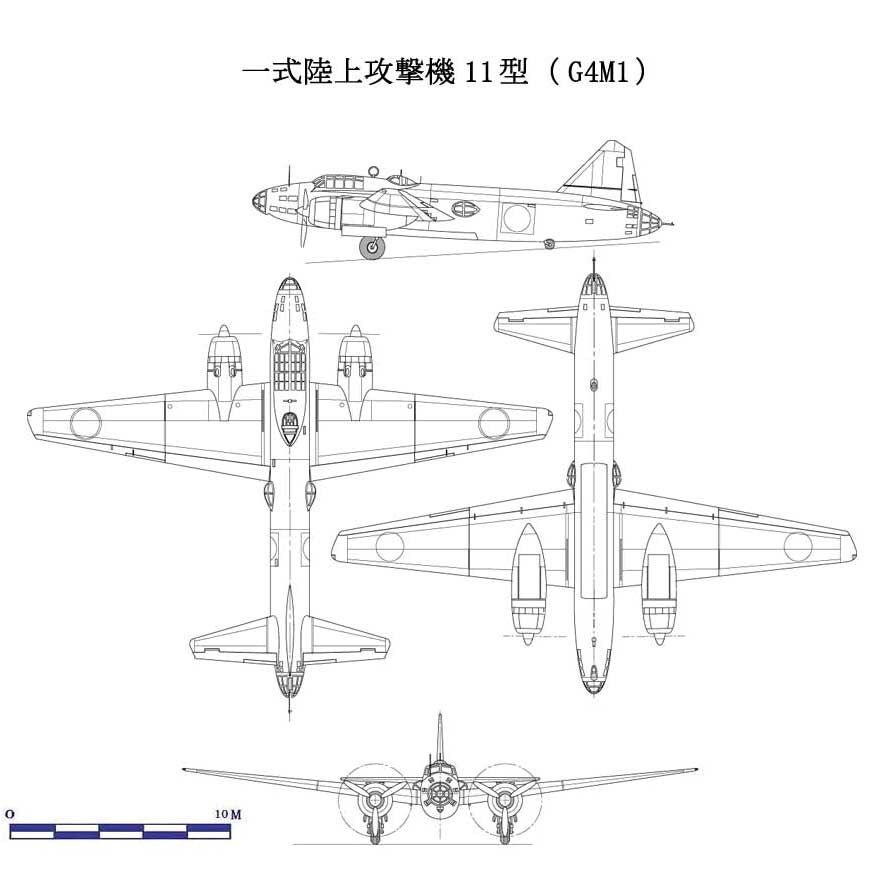
General characteristics
- Crew: 7-8
- Length: 19,97 m
- Wingspan: 24,88 m
- Height: 4,900 m
- Wing area: 78,125 m2
- Empty weight: 6800 kg
- Gross weight: 9500 kg
- Maximum Take-off Weight: 12500 kg
- Powerplant: 2 x Mitsubishi MK4A Kasei 11 with a starting power of 1,125 kW (1,530 HP)
- Propellers: Three-blade metal propeller with a diameter of 3,400 mm
Performance
- Maximum speed: 428 km/h
- Cruising speed: 315 km/h
- Range: 4290 km
- Maximum Range: 6100 km (?)
- Service ceiling: 9220 m
- Climb Rate: 9,133 m/s
- Rate of climb: 10,63 min to 5000 m
Armament
- Guns:
- 1 x Type 92 7.7 mm movable machine gun on the tip of the nose (582 rounds)
- 2 x 7.7mm Type 92 movable machine gun on the sides of the fuselage behind the wings (582 rounds)
- 1 x Type 92 7.7 mm movable machine gun in a rear position
- 1 x Type 99 Model 1 20mm Tail Turret Mobile Cannon (540 rounds)
Rifle firing range
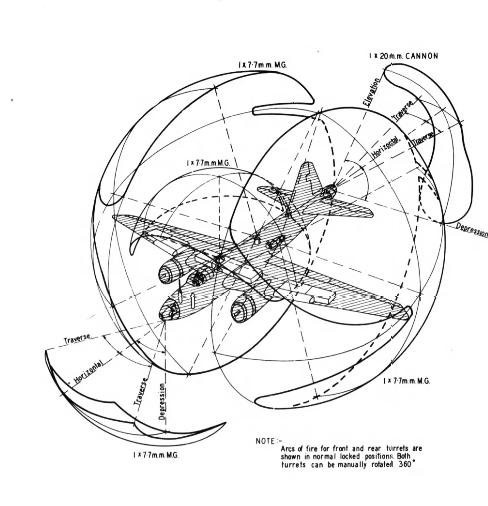
- Bombs
- 1 x 800 kg bombs
- 2 x 500 kg bombs
- 4 x 250 kg bombs
- 12 x 60 kg bombs
- 1 x torpedo Type 91
Special thanks
Summary
The Mitsubishi G4M1 Model 11 mod. 1941 is an interesting aircraft for Japan in War Thunder. This bomber would be a good complement to the G4M1 in the game, which has better performance at heights. This aircraft will be useful in air, naval, or ground battles as a fairly well-armed Japanese bomber. I encourage you to discuss in the comments and to share your own knowledge on this subject.
Finally, I apologize for the linguistic and logical errors because unfortunately English is not my main language and I had to use google translator.
Internet sources
一式陸上攻撃機 - Wikipedia
Mitsubishi G4M – Wikipedia, wolna encyklopedia
一式陸上攻撃機/三菱Mitsubishi G4M | 大日本帝国軍 主要兵器
Mitsubishi G4M1 Model 11 “Betty” | Plane-Encyclopedia
Mitsubishi G4M Betty
Mitsubishi G4M “Betty” - Japanese Aircraft and Warplanes - WW2
一式陸上攻撃機/Mitsubishi G4M:大日本帝国海軍 航空機
G4M ‘Betty’, Mitsubishi (Japan)
Mitsubishi G4M: Why Betty Bombed
Micubiši G4M1 11 [Betty] : Micubiši
Mitsubishi G4M
Уголок неба ¦ Mitsubishi G4M
Book sources
- Japanese Aircraft of the Pacific War page 378-387
- Japanese Aircraft of Wolrld War II : 1937-1945 ,Thomas Newdick, Edition 2 2017, page 25-28
- (Wydawnictwo Militaria No.67) Mitsubishi G4M “Betty”
(Wydawnictwo Militaria No.67) Mitsubishi G4M “Betty” | PDF - (Aircraft Profile 210) - Mitsubishi G4M Betty
(Aircraft Profile 210) - Mitsubishi G4M Betty PDF | PDF - MARU MECHANICS Yokosuka P1Y & Mitsubishi G4M Betty
MARU MECHANICS Yokosuka P1Y & Mitsubishi G4M Betty | PDF - Bunrindo - Famous Airplanes of The World 59 - Mitsubishi G4M 'Hamaki ’ Army Type 1 Attack Bomber
Bunrindo - Famous Airplanes of The World 59 - Mitsubishi G4M 'Hamaki ’ Army Type 1 Attack Bomber | PDF - Japanese aircraft manual. Report No. 1o(10), USSBS Index Section 2 (文書名:Records of the U.S. Strategic Bombing Survey ; Entry 41, Pacific Survey Reports and Supporting Records 1928-1947 = 米国戦略爆撃調査団文書 ; 太平洋地域調査報告書及び作成用資料) (シリーズ名: Summary Report(Pacific War)(final report): Twentieth Air Force bomb plotting technique(two copies)(unpublished report) and data relevant to report) - NDL Digital Collections

Thank you for reading the suggestion, see you in the next one. Good luck pilots

